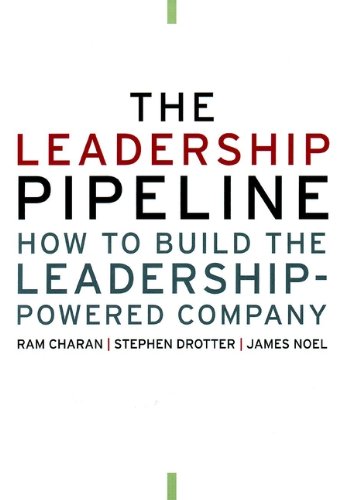Give and Take: A Revolutionary Approach to Success
RATING


Give and take – it is how the world is defined. There are those who give freely of themselves and what they have, and there are those who are merely looking to take as much as possible. There is a fine line that separates individuals who give and take, and Adam Grant sees this as a defining aspect of how we think. He outlines interpersonal interaction via three avenues: taking, matching, and giving.
Each of these avenues relates to the balance between giving and taking – skewed towards giving, evenly balanced, or skewed towards taking. He focuses on giving in particular for two reasons: the first being that most givers are the least successful individuals; the second being that givers are often the most successful individuals. While seemingly contradictory, he describes the difference between these two types of giving and outlines how giving can be part of a successful strategy that does not hamper growth or progression. While it can be confusing, it outlines how the balance between giving and taking can be used to benefit the individual.
As a company that prides itself on giving back to the community, we laud Grant’s analysis of the successes surrounding giving. All too often the gains become the primary focus of a business, and that can blind leaders from making moves that are in the best interest of their constituents and customers. This book identifies that there are ways to give without doing a disservice to yourself or your business. There also is value in how Grant identifies genuine givers from manipulative takers. For all intents and purposes, the giver relationship that Grant describes is similar to the synergistic relationship that we see in the customer relationship. Applying these same principles to the customer can help define customer segments further so you can better understand which individuals are genuinely looking for the customer relationship and which are merely looking for what will give them the most benefit.
We felt that the book was light in its analysis of the actual act of giving. Givers are the focus of the book and we noted that they encompass, at least in Grant’s perspective, both ends of the success spectrum, but they are only analyzed from how they promote themselves. This begs the question as to how altruists are categorized – as givers who are successful, or as givers who are not? Specifically, we would have liked to see some sort of methodology surrounding giving and what forms of giving provide the avenue to success that Grant touts. Too often we found ourselves faced with another story that tried to embellish the topic. This added unnecessary bulk that could have been devoted to further explaining the methodology or simply resulted in a shorter book.
Named one of the best books of 2013 by Amazon, the Financial Times, and the Wall Street Journal– as well as one of Oprah’s riveting reads, Fortune‘s must-read business books, and the Washington Post‘s books every leader should read.
For generations, we have focused on the individual drivers of success: passion, hard work, talent, and luck. But today, success is increasingly dependent on how we interact with others. It turns out that at work, most people operate as either takers, matchers, or givers. Whereas takers strive to get as much as possible from others and matchers aim to trade evenly, givers are the rare breed of people who contribute to others without expecting anything in return.
Using his own pioneering research as Wharton’s youngest tenured professor, Adam Grant shows that these styles have a surprising impact on success. Although some givers get exploited and burn out, the rest achieve extraordinary results across a wide range of industries. Combining cutting-edge evidence with captivating stories, Grant shows how one of America’s best networkers developed his connections, why the creative genius behind one of the most popular shows in television history toiled for years in anonymity, how a basketball executive responsible for multiple draft busts transformed his franchise into a winner, and how we could have anticipated Enron’s demise four years before the company collapsed–without ever looking at a single number.
Praised by bestselling authors such as Susan Cain, Dan Pink, Tony Hsieh, Seth Godin, Dan Ariely, Gretchen Rubin, David Allen, Dan Gilbert, and Robert Cialdini–along with senior leaders from Google, McKinsey, Merck, Estee Lauder, Twitter, Nike, and NASA–Give and Take highlights what effective networking, collaboration, influence, negotiation, and leadership skills have in common. This landmark book opens up an approach to success that has the power to transform not just individuals and groups, but entire organizations and communities.
Here is where Grant’s methodology and research hits a wall. He encourages giving and having a net outflow without expecting things in return, but at the same time he says that giving is the way to attain success. By doing so, he urges people to begin giving with the expectation that they will find success. This undermines his methodology because there will be those who adopt the strategy of giving artificially to find some sort of success. So in terms of uses and application, this book highlights how giving should be a part of any successful strategy and should be used as a guide for understanding why giving helps foster success.

This book relies primarily on the author’s research to create a methodology surrounding the effectiveness of giving. While it does use many anecdotal items as support, we cannot say this is a book that has application or measurement principles for a lack of steps and guides. Instead, it is merely a research-based insight to how giving affects performance and success.
See content on this topic


Sales training for front line along with basic development and coaching principles for line management.
Understanding how leaders must evolve with relation to the evolution of business models, new management models, and the significant changes to the workforce with Digital Natives now making up more than 50% of the workforce globally.
Understand the theory and mechanics of developing and managing a customer-centric and experience-driven corporate culture that is consistent and stable and includes elements of Employee Experience (EX) and Employee Relationship Management (ERM).
Understanding the evolution of leadership styles, management models, organizational structures, performance measurement and guiding change in the evolution of business models from product-centric to customer-centric and even relationship-centric.
Understand how to manage both internal and external digital transformation while considering the landscape for digital business models and the effect on traditional business models. Understanding organizational readiness for transformation and the role of corporate culture in managing transformations.
The changes in consumer behavior, employee behavior, and the evolution of business models in the digital age cause significant difficulties and imperatives for leaders who must develop new skills and evolve their leadership styles to be effective in this fast changing, challenging, and competitive environment.
Understanding how leaders must evolve with relation to the evolution of business models, new management models, and the significant changes to the workforce with Digital Natives now making up more than 50% of the workforce globally.
Understand how to manage both internal and external digital transformation while considering the landscape for digital business models and the effect on traditional business models. Understanding organizational readiness for transformation and the role of corporate culture in managing transformations.
The changes in consumer behavior, employee behavior, and the evolution of business models in the digital age cause significant difficulties and imperatives for leaders who must develop new skills and evolve their leadership styles to be effective in this fast changing, challenging, and competitive environment.
Understanding how to design & manage change/transformation programs in organizations of different sizes. This course will help any size team or organization to better deal with change & transformation on any scale.




 Copy Link
Copy Link
 E-mail
E-mail
 LinkedIn
LinkedIn
 Facebook
Facebook
 Telegram
Telegram
 WhatsApp
WhatsApp


















 Go Back
Go Back
Leave a Reply
You must be logged in to post a comment.